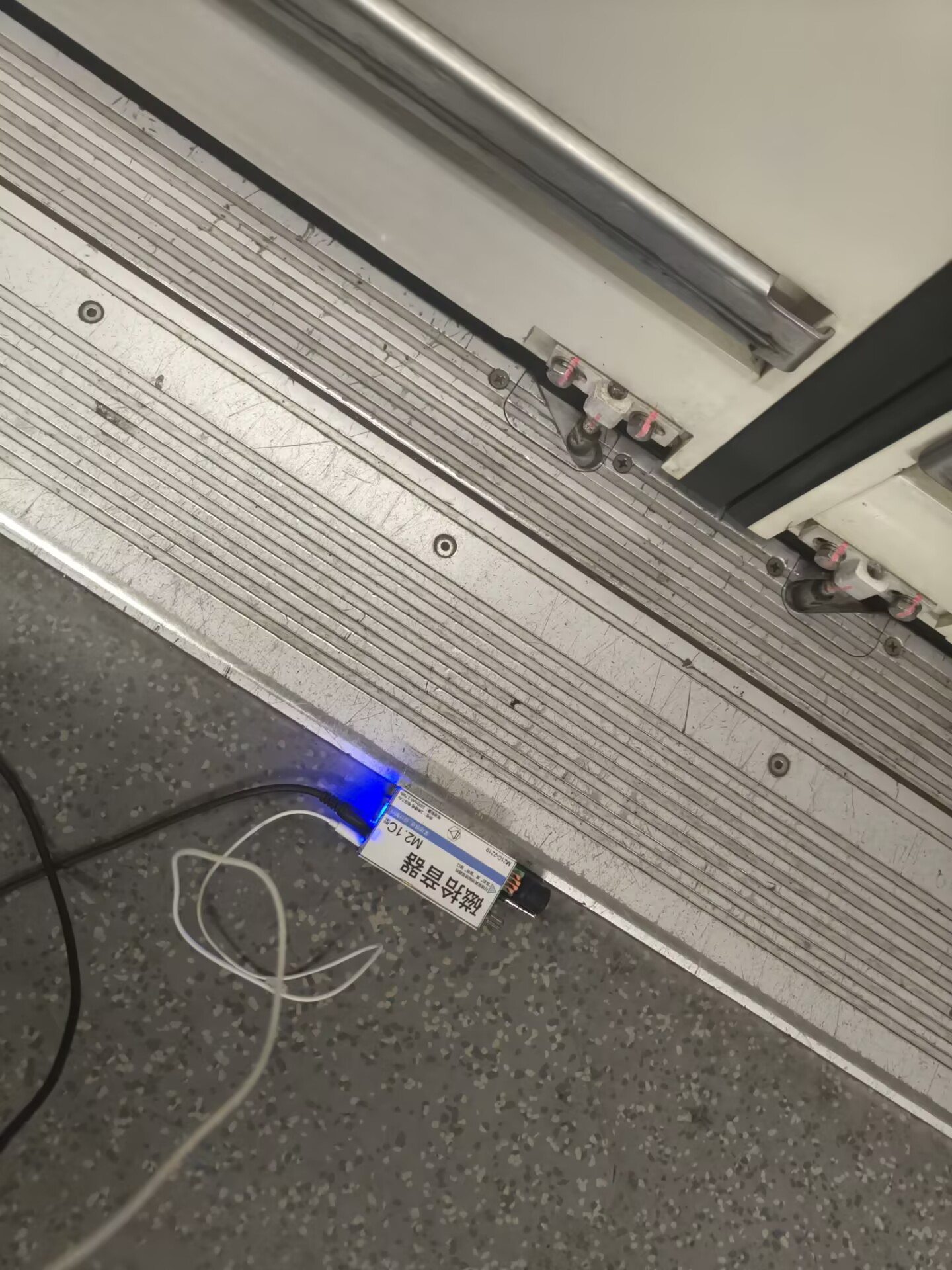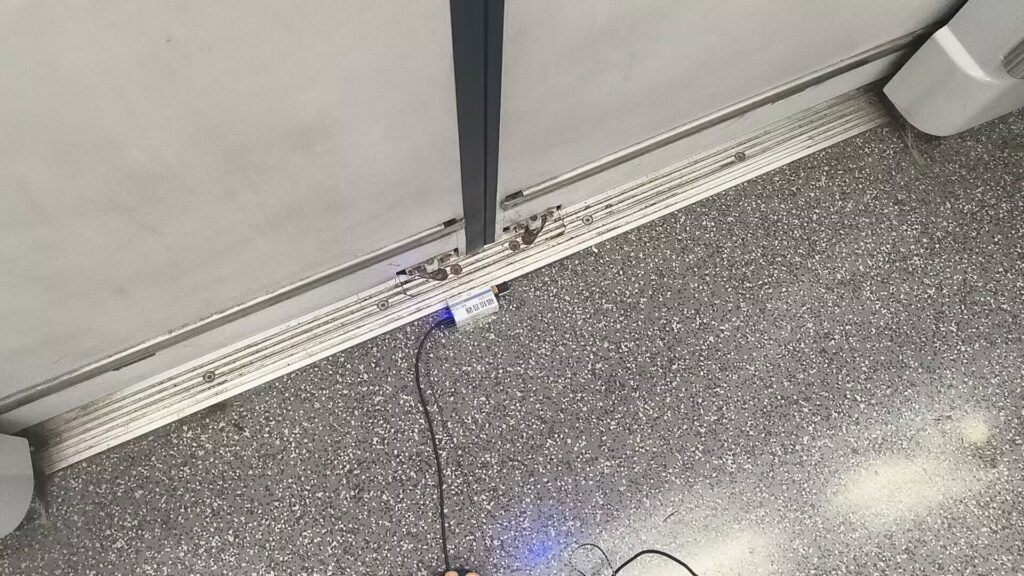MoHa-Radio Research Institute & Inductor Recording
How Moha-Radio Made the Leap to China and Achieved a Remarkable Rebirth…
MoHa-Radio Research Institute is a collective of public transport enthusiasts dedicated to capturing electromagnetic recordings, producing Moha-Recorders (pickups), and advancing in-depth technical research.

The Moha-Recorders used for electromagnetic recording
From top to bottom and left to right: the C1L3 model by CLG, the B2.8 model by bulb_tester2009, and the SY01 by 57.
With extensive field experience, we employ specialized Moha-Recorders, coupled with smartphones or digital recorders for electromagnetic audio capture.
To isolate traction motor signatures from ambient noise (e.g. braking systems/passenger announcements), post-processing via spectral editing tools ensures signal clarity.
Compared to conventional microphones, coil-based recording delivers superior VVVF tonal integrity—immune to cabin PA systems and mechanical interference.
In electro-magnetic recording, Moha-Inductors are indispensable.
The quality of these inductors directly determines recording effect.
The idea of “Moha-Inductors” (pickups) was first appeared around 2013 in the “Moha-Radio” device made by some Japanese train fans. But these products were ”EOFed” in 2017 for several reasons.
However, Moha-Inductors work on a very simple principle:
Coil picks up stray magnetism → Signal gets amplified (if it is needed) → Sound gets recorded. (Electromagnetic induction)
In 2018, a railway enthusiast (Bilibili: 加特技の肖特基) attempted to replicate the design. However, since most metro carriages in China are using aluminum-alloy bodies, which significantly weaken magnetic fields, the devices performed poorly. So 3 years later, the first Moha-Inductors with built-in amplifier circuits (using op-amps) was . This amplification technology is now essential in all modern designs.
Our products evolve from the Gen 1 circuit, which has been continuously refined to spawn diverse derivatives since 2021. Meanwhile, the Gen 2 circuit now significantly boosts amplification levels (>100× gain) and efficiency, delivering enhanced signal clarity for electromagnetic recordings of metro trains and EMUs.
What are “1st Gen” and “2nd Gen” MoHa-Radio Circuits?
1st Gen Circuit
The Gen 1 circuit refers to the MoHa-Radio design developed in 2021 (as previously mentioned). Key features are below:
Power & Signal Path
- Power Supply: Single 9V 6F22 battery (IEC 60086-2 compliant)
- Core Op-Amp: NE5532 dual-channel configuration:
- Channel 1: Signal amplification
- Channel 2: Headphone impedance matching
- Inductor Design:
- I-core inductors replace hand-wound coils (Early Issue: Inductor fusion during soldering (reflow process optimized post-2023))
Protection & Interface
- Input Protection: Dual 1N4148 diodes (Vf=0.72V) for overcurrent protection
- Output Stage:
- AC-coupled via 2.2μF capacitor and 7.5k resistor
- 7.5KΩ load resistor triggers the smartphone microphone
- Gain Control:
- Static adjustment through R3
Evolutions
- Derivative Models
- Limitation: True dynamic gain required 2024 Gen2 architecture
- M2.0 cascaded circuit (developer: mdtm_, Dual-stage amplification)

This is the prototype unit of the Gen 1 circuit architecture.
Made by 大糖果2
©2021, 大糖果2

MoHa-Recorder C2.0: First Implementation of Precision-Machined Aluminum Enclosure
Released: March 2023
©2024, Chen-Leigang

M2.0 MoHa-Recorder: Ultimate Evolution of Gen 1 Circuitry
©2024, 某地铁迷_
2nd Gen Circuit
Introduced in mid-2024 as an upgraded version with significant improvements:
- Higher amplification factor
- Operates at 3-4V (e.g., two AA batteries)
- Low-voltage op-amps boost performance but initially produced muffled audio – later optimized through R2 resistor/potentiometer specification adjustments
- First implemented in CLG’s C2.9 model (limited release due to circuit flaws)
- Gained prominence through:
- 57’s SY01 (June 2024, CR2032 battery)
- CLG’s C2L0 (June 2024, CR2032)
- bulb_tester2009’s B2.8A (July 2024, CR2032)
- AA battery adoption debuted in B2.8E/SY01B models (January 2025)

The MoHa-Radio displayed in the image is model B2.8A
This MoHa-Radio is the fourth model developed based on the 2nd Gen circuit.
©2024, bulb_tester2009

Shown here is the B2.8E, the first second-generation circuit MoHa-Radio that utilizes AA batteries
Concurrently released with it was the SY01B model from the ’57 series.
©2025, bulb_tester2009

How to Record Inductor Recording
Under normal circumstances, it is necessary to identify the corresponding location on the electric motor or traction inverter for recording purposes. Furthermore, these locations exhibit a certain regularity.
Where can sounds be recorded?
Typically, electromagnetic leakage from VVVF systems occurs near the traction inverter and the motor, and sometimes can also be detected along connecting cables. The traction inverter generates VVVF signals, while the motor converts electrical signals into kinetic energy. Due to their high power output, the electromagnetic leakage they produce can still be captured even through thick metal structures.
Our recording results in different regions








FAQ
How can I purchase a MoHa-Radio?
You may visit the Bilibili/YouTube channels of various MoHa-Radio manufacturers or join our Discord server1 to purchase one.
How do I record Inductor Recording?
To locate optimal recording points for different vehicle models, visit our Bilibili channel for illustrated guides or download our published diagrams.
How can I repair my MoHa-Radio if it malfunctions?
Join our Discord server to report issues with your device. If the MoHa-Radio is within the 3-month warranty period, mail it directly to us for repair. For out-of-warranty cases, additional repair fees and round-trip shipping costs apply. Warranty standards are governed by the MoHa-Radio Terms of Use.
Can I apply to join the MoHa-Radio production team or become an OEM manufacturer?
If you possess circuit design knowledge and PCB soldering skills, contact us via our Discord server. Before commercial sales, we will provide a sample unit. Upon completing the sample and passing quality inspection, you will receive at least one specialized role granting access to exclusive development channels on our Discord server.
Begin Your Inductor Recording Journey with Our MoHa-Radio Devices
- Acquire MoHa-Radio
- Commence Inductor Recording
- Access Warranty Coverage

B2.7S Recording Guangzhou Metro A5 Train
©2024, bulb_tester2009
- Discord server links please check the footer of the page yourself! ↩︎
